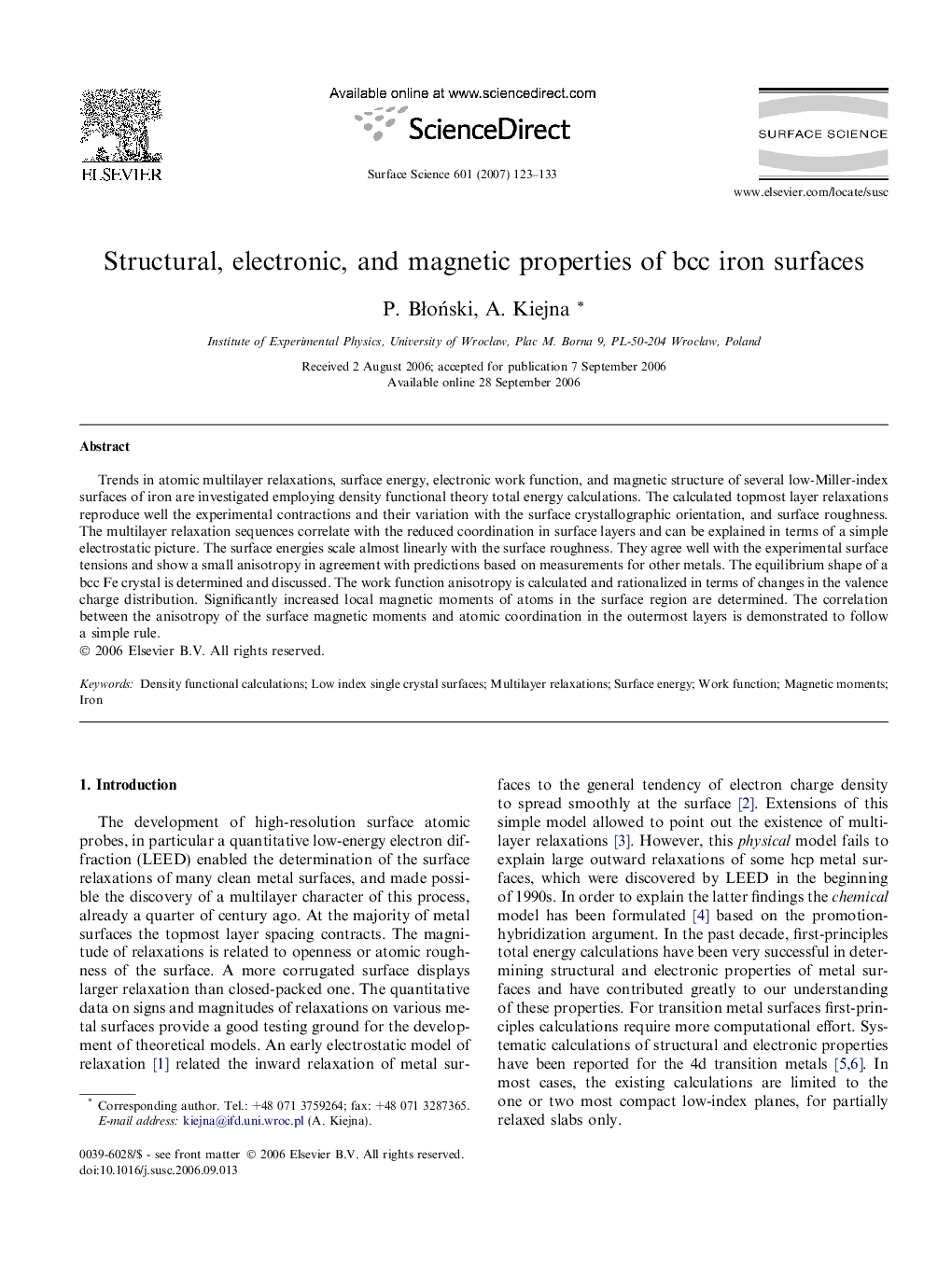| Article ID | Journal | Published Year | Pages | File Type |
|---|---|---|---|---|
| 5426235 | Surface Science | 2007 | 11 Pages |
Trends in atomic multilayer relaxations, surface energy, electronic work function, and magnetic structure of several low-Miller-index surfaces of iron are investigated employing density functional theory total energy calculations. The calculated topmost layer relaxations reproduce well the experimental contractions and their variation with the surface crystallographic orientation, and surface roughness. The multilayer relaxation sequences correlate with the reduced coordination in surface layers and can be explained in terms of a simple electrostatic picture. The surface energies scale almost linearly with the surface roughness. They agree well with the experimental surface tensions and show a small anisotropy in agreement with predictions based on measurements for other metals. The equilibrium shape of a bcc Fe crystal is determined and discussed. The work function anisotropy is calculated and rationalized in terms of changes in the valence charge distribution. Significantly increased local magnetic moments of atoms in the surface region are determined. The correlation between the anisotropy of the surface magnetic moments and atomic coordination in the outermost layers is demonstrated to follow a simple rule.
